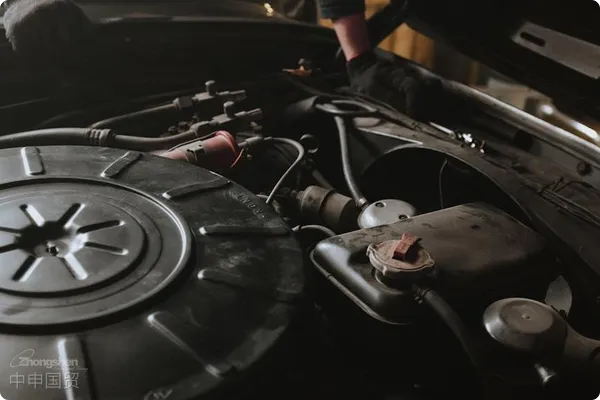- Shanghai Zhongshen International Trade Co., Ltd. - Two decades of trade agency expertise.
- Service Hotline: 139 1787 2118

Introduction: Market Status and Challenges of Imported Brake Fluid Lines
In recent years, with the scale of China's automotive aftermarket exceeding 1.3 trillion yuan (data source: China Association of Automobile Manufacturers), the demand for imported brake hoses—a core safety component of automotive braking systems—has been steadily rising. The implementation of the new EU ECE R90 certification regulations in 2023, updates to the U.S. DOT certification standards, and the enforcement of China's mandatory GB16897-2022 standard have significantly raised the compliance threshold for imports. As a professional agency that has served global top 10 auto parts suppliers such as Bosch and Continental, we have summarized the following key industry insights.
I. Access Compliance: Three Core Strategies for Overcoming International Certification Barriers
1.Source Authentication Management
- European Union Market: It is mandatory to verify whether the supplier holds a valid ECE R90 certification (including the latest wet brake test report).
- North American Market:DOT certification requires special attention to the pulse pressure test requirements specified in FMVSS 571.106.
- Chinese Market: The CCC certification application requires the simultaneous submission of a material corrosion resistance report (salt spray test ≥720h).
2.Technical Document Penetration Review
- Request the supplier to provide the complete TISI certificate (for Thai production lines) and JIS D2605 test report (for Japanese suppliers).
- Pay special attention to the comparison of differences between the SAE J1401 standard and GB/T7127.
3.Industry-specific regulatory requirements
- The General Administration of Customs has newly added a "Special Inspection for Brake Hoses" (HS Code: 4009.22/23) in 2023.
- The import declaration must be accompanied by the original manufacturer's burst pressure test video (no less than 30MPa sustained for 5 minutes).
II. 12 Key Control Points in the Entire Import Process
Phase One: Trade Compliance Pre-screening
- Supplier In-Depth Background Check: Verification of Production Qualifications via the German TüV Database.
- Product classification advance ruling: Avoid classification disputes under item 4009 for different materials (e.g., PTFE-lined fittings).
- Tariff Planning Proposal: Utilizing the RCEP Agreement to Achieve a 15% Tax Rate Reduction for Japanese Production Lines
Phase Two: Logistics and Quality Inspection
- Special transportation solution: Design anti-bending packaging (bending radius ≥150mm)
- 48-hour Time-bound Management upon Arrival: Coordinating Priority Customs Inspection Channels
- Laboratory Penetration Testing: Mandatory inspection items include:
- Dynamic Ozone Aging Test (ASTM D518)
- Low-temperature flexibility (-40℃×72h)
- Joint pull-off force (≥1.5 times the design pressure)
Phase 3: Post-Customs Clearance Management
- 3CExemption Certificate Application: Special Channel for the Repair Parts Market
- Construction of a Quality Traceability System: Each batch of products is bound with an RFID tracking chip.
- Inventory Intelligent Alert: Establish a Safety Stock Model (consideringMaritime TransportationCycle + 30-day fluctuation coefficient)
III. Risk Prevention and Control: Analysis of Typical Cases from the Past Three Years
1.Cases of Material Declaration Errors
A German company faced a 45-day port detention of 2 million worth of goods due to the failure to distinguish the customs code differences between FKM (fluoroelastomer) and NBR (nitrile rubber). Solution: Conducted supplementary declaration by reverse-engineering material composition through a third-party laboratory.
2.Breaking through technical trade barriers
Assisted an Italian supplier in breaking through China's new GB12676-2023 regulation by designing a double-layer braided structure (inner layer aramid + outer layer stainless steel), successfully obtaining type approval.
3.Anti-dumping Duty Evasion Strategies
A 67.14% anti-dumping duty on Indian-made brake hoses can be legally avoided through processing in Thailand's bonded zones.
IV. Value Creation: Five Value-Added Services of Professional Agency
1.Supplier Compliance Map: Establish a dynamic qualification database for global TOP50 brake hose enterprises
2.Intelligent Tariff Calculation System: Real-time updates on tax rates and preferential policies in 30 countries
3.Quality Assurance Plan: Jointly customized with AIG the "Special Liability Insurance for Brake Components"
4.VMI inventory hosting: Achieve JIT distribution across 8 national bonded warehouses
5.Early warning of technical regulations: Monthly updates on global regulatory developments (including environmental regulations such as EPA and REACH)
Conclusion: The Strategic Value of Choosing a Professional Partner
Against the backdrop of the global automotive supply chain restructuring in 2024, it is crucial to select an agency with the following capabilities:
- Having international laboratory cooperation channels such as UL/Dekra.
- Handled dispute cases related to TS16949 system certification.
- Establish a Customs AEO Advanced Certification Clearance System
- A customs team equipped with automotive engineering expertise.
We recommend that importers request their agents to provide the "Brake Hose Import Compliance Self-Checklist" during the inquiry stage, assessing the supply chain risk level through 55 key indicators to ensure project compliance. For customized solutions, please feel free to contact our technical team for an in-depth diagnosis.
Related Recommendations
? 2025. All Rights Reserved. Shanghai ICP No. 2023007705-2  PSB Record: Shanghai No.31011502009912
PSB Record: Shanghai No.31011502009912









